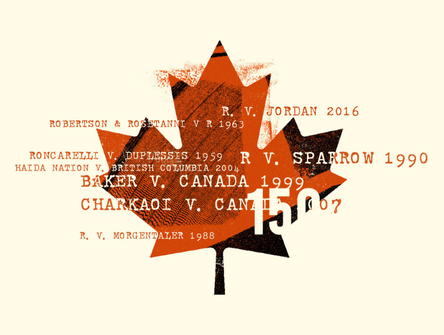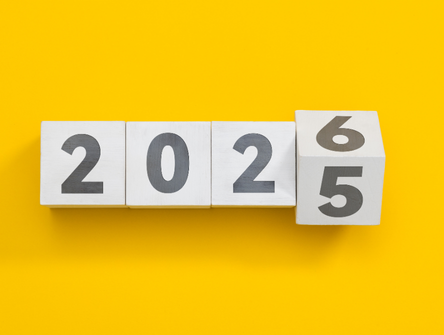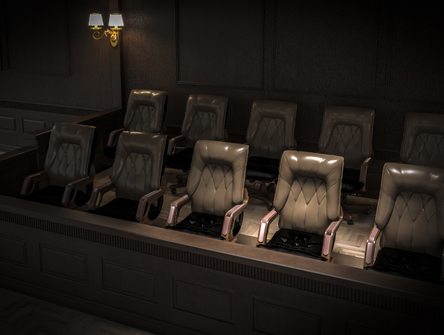Legal aid's barrier to women
Income thresholds pose a higher access barrier to single women living in poverty than men. That's what the data tells us.
.jpg?ext=.jpg)
A new study from the University of Calgary suggests that legal aid thresholds may unfairly affect women across the country. Gendered effects on income, particularly for individuals below the market basket measure of poverty, operate in such a way that women earn slightly more than men at this level. As a result, fewer women qualify for legal aid in family law cases than men.
"We were interested in knowing how those thresholds may apply differentially between men and women because men and women have different distributions of income," says Lindsay Tedds, an economist at the University of Calgary who specializes in intersectionality and gender-based analysis-plus (GBA+) and who co-authored the report with Gillian Petit.
Tedds discovered the differences in earnings from her previous research as part of the British Columbia Basic Income Panel. She wanted to know whether they made fewer women eligible for family legal aid.
"As it happens, in all provinces except Quebec, that's pretty true—the legal aid thresholds are set where you have a group of women who are still living in poverty, but their income is just a little bit over those thresholds, and therefore they can't get legal aid for getting their children, escaping violence, and that kind of thing," Tedds says.
She also says we need more public information on the administration of legal aid in provinces.
"Legal aid is underfunded, and as a result, there needs to be a queuing mechanism, but we really need to think hard about how eligibility conditions affect those most in need of legal aid," Tedds says.
Tedds explains that family legal aid receives partial funding from the federal government through the Canada Social Transfer. Applicants must meet residency requirements and social assistance eligibility, with no other strings attached.
"The Canada Social Transfer goes to a lot of really important services that tend to be used by women predominantly, but there seems to be no consideration for how that money is used to achieve the outcomes the federal government keeps talking to us about, which is gender-based equality," says Tedds. "The fiscal transfers are not subject to anywhere near the level of GBA+ scrutiny that all of our other programs are supposed to be." She says if the federal government genuinely cares about them, it needs to examine the CST and understand how provinces use it what the implications are for women, especially racialized women.
Tedds says that Quebec has done a decent job of thinking through these issues and ensuring there isn't a gendered effect in their eligibility. However, it's a different picture in BC, Alberta and Ontario.
In BC, the Single Mothers Alliance is suing the province and Legal Aid BC for failing to offer adequate family law legal aid to women fleeing abusive relationships. BC is fighting the challenge even though the government has made GBA+ commitments, says Tedds. "So they really should be looking at themselves and thinking, 'are the outcomes from another $100 million of funding worth it for us?'"The CBA is an intervenor in the Single Mothers Alliance case.
In Alberta, someone qualifies for legal aid, they are required to pay back the value of the legal aid they receive, and for as much as the provincial government talks about supporting women fleeing violence, legal aid can be a valuable tool for achieving that outcome.
In Alberta, the government talks about supporting women escaping violence. But individuals who qualify for legal aid must repay the value of the assistance received.
"One of the things that we know is that women are not properly supported when they leave these violent situations—and predominant the family law legal aid cases involve some form of violence—it's really hard to maintain your economic attachments, such as your job, because so much is having to go into having to fight these battles and get the access to the goods and services that you need," Tedds says.
She emphasizes that when it comes to legal aid, increasing income alone cannot compensate for the need for services. If someone earns $13,000 annually, affording a lawyer is nearly impossible. Financial constraints trap women in harmful situations, with significant economic repercussions. "Violence also includes economic violence," she says.
Janet Mosher, a law professor at Osgoode Hall, says the paper sheds light on an overlooked aspect of analyzing gendered effects in social policy. The federal government has embraced an analytical framework. Still, it's the provinces and territories that manage legal aid, even though they lack the same comprehensive analysis,
It all speaks to the need for justice stakeholders to share data to evaluate how the justice system is accessed, says Jennifer Khor of the Community Legal Assistance Society.
"More of this type of gender-based analysis or analysis which examines the disproportionate impacts on diverse groups, including, people who identify as Indigenous, racialized persons, from different cultural or religious backgrounds, or people living with disabilities, is so helpful in identifying possible systemic issues," she says.
Khor also expresses concern over the paper's finding that financial eligibility poses a greater barrier for impoverished women without children to access legal aid. It has troubling implications for vulnerable women who may be experiencing intimate violence and coercive control, and lack the means to get legal representation.
In criminal matters, men also likely benefit more from legal aid than women simply because more men than women face criminal charges.
Looking at how legal problems manifest themselves in people's lives, Mosher says we might draw different conclusions about the gendered impacts of legal aid funding certain matters and not others.
She adds there is a great need for assistance to address "poverty law" problems, such as appealing social assistance decisions, which also has particularly gendered impacts.
According to Khor, the paper does not evaluate any potential changes to coverage of legal aid services. "Cuts to legal aid in many provinces have resulted in limiting or eliminating services, such as in reduced scope of family law coverage, reduced number of cases approved, reduction or elimination of poverty law assistance," she says. "So while the analysis shows that more people in Ontario that live in poverty are not eligible for legal aid than in BC, we also need to consider that Ontario provides more coverage areas than BC and Alberta do."
Khor also points out that financial eligibility rates need to consider the varying costs of living in different cities, such as Vancouver and Toronto, where expenses are significantly higher, leaving individuals with even less disposable income. So a family of four with an income above $67,680 would not qualify for legal aid in BC, for example. "There are many folks in Canada above the poverty line who need legal assistance and cannot afford a lawyer," says Khor. "Canada's legal aid system is in crisis, and has been for some time, requiring a real rethink about how we support ensuring access to justice."


